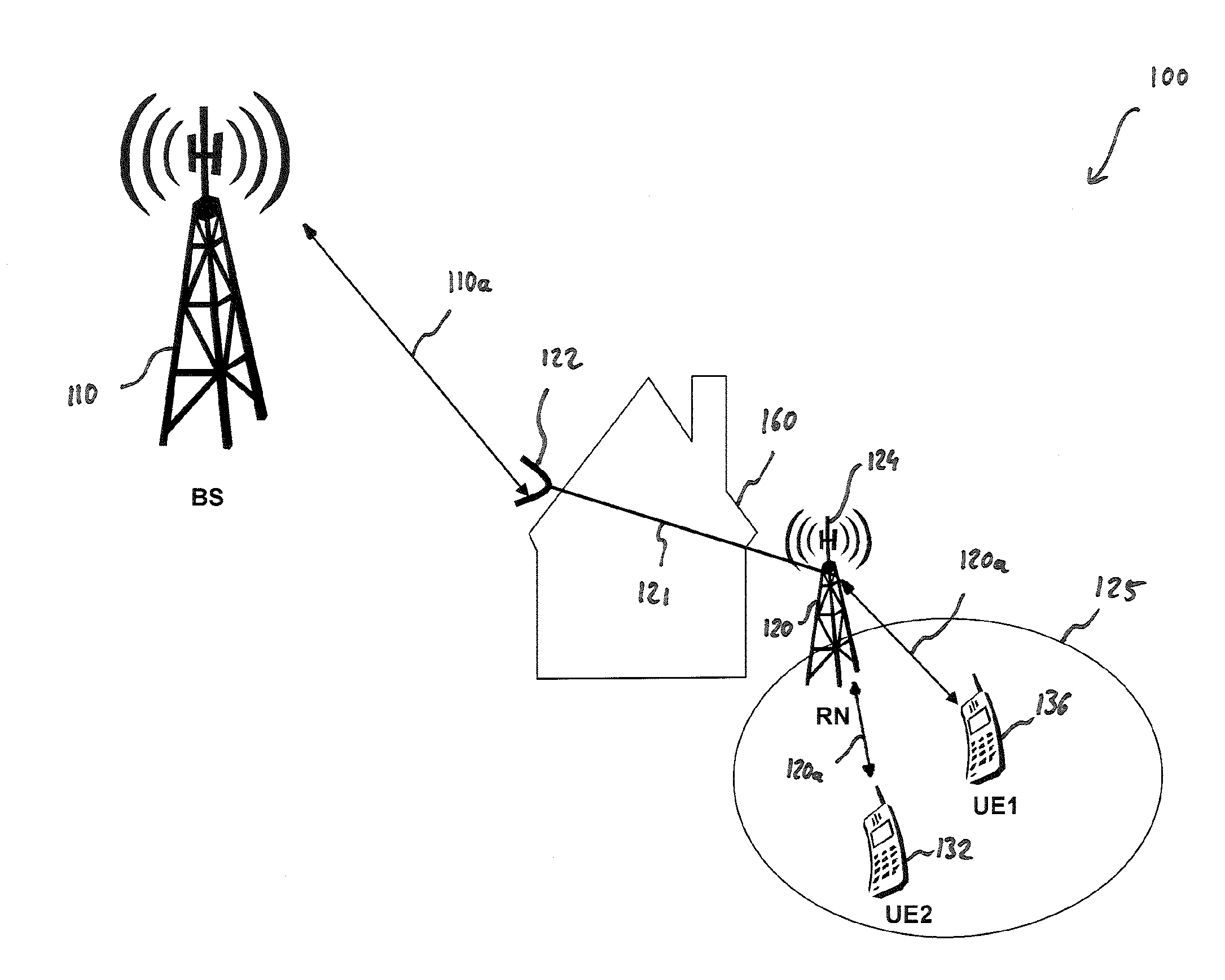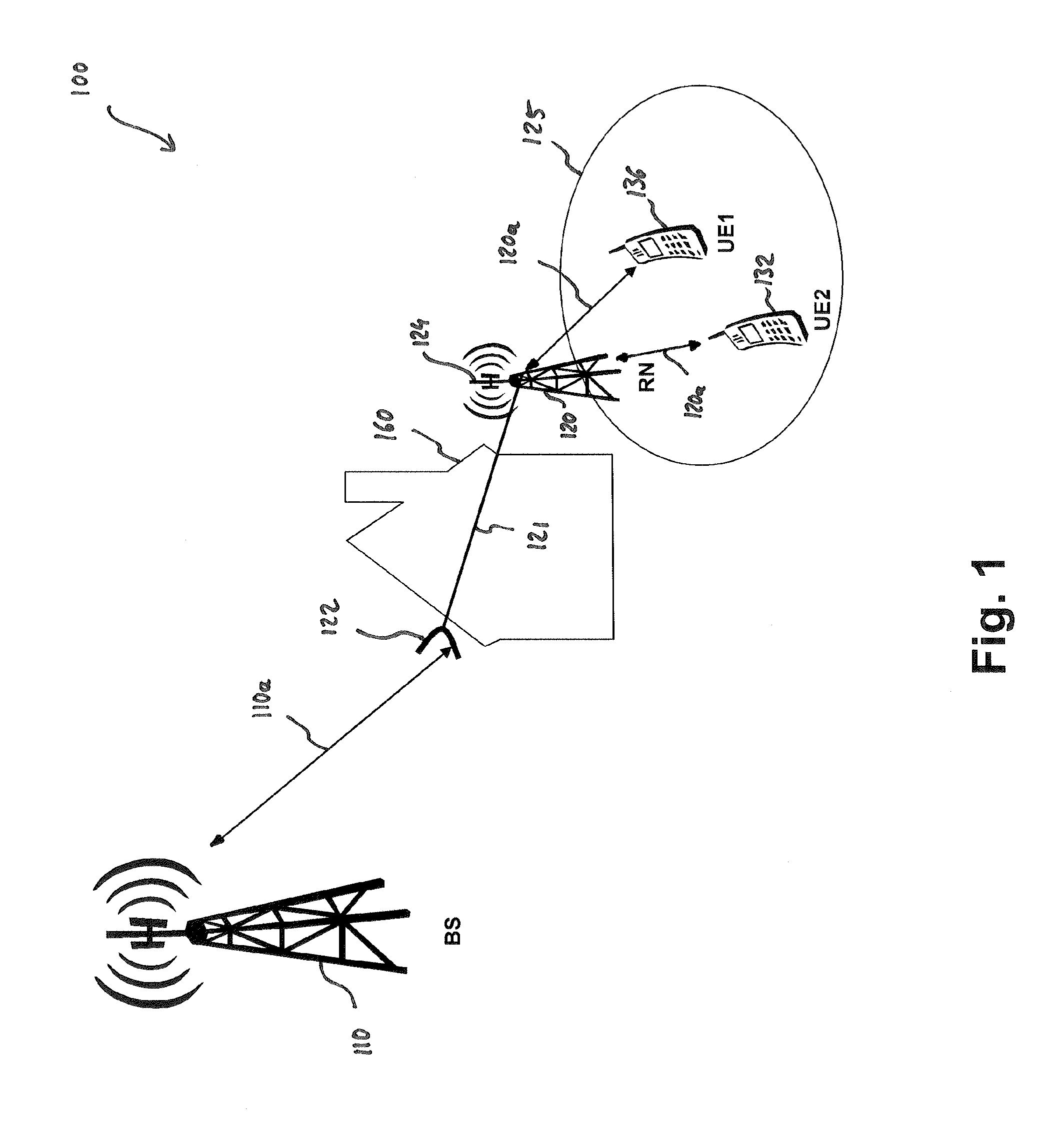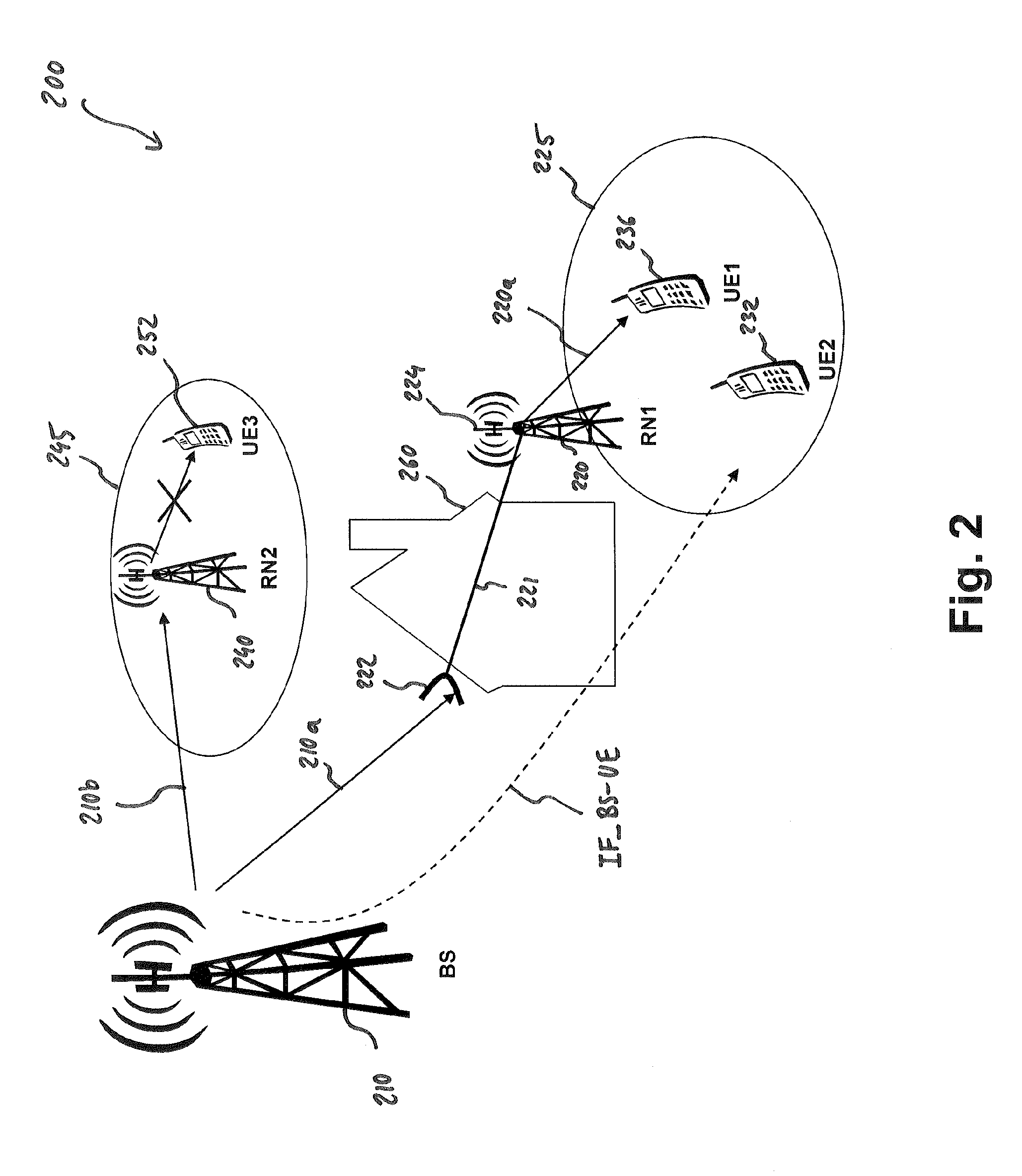Method and Apparatuses for Data Transfer within a Relay Enhanced Telecommunication Network
a technology of enhanced telecommunication network and relay system, which is applied in the field of relay enhanced telecommunication network, can solve the problems of unwanted feedback contribution to the total received dl radio signal, deterioration of the radio signal quality of the donor bs, and affecting the data transfer speed of the relay system, so as to achieve the effect of maximizing the data throughput between the relay system and the respective u
- Summary
- Abstract
- Description
- Claims
- Application Information
AI Technical Summary
Benefits of technology
Problems solved by technology
Method used
Image
Examples
Embodiment Construction
[0093]The illustration in the drawing is schematically. It is noted that in different figures, similar or identical elements are provided with the same reference signs or with reference signs, which are different from the corresponding reference signs only within the first digit.
[0094]FIG. 1 shows a relay enhanced telecommunication network 100 operating in accordance with an embodiment of the present invention. The network 100 comprises a base station (BS) 110 and a relay node (RN) 120. The BS 110 and the RN 120 are connected via a radio link 110a, which is called a relay link or a backhaul link. The RN 120 serves a relay cell 125. The network 100 further comprises two user equipments, a first user equipment (UE) 136 and a second UE 132. The two UEs 136 and 132 are both connected to the RN 120 via radio links 120a. These radio links 120a are also called access links.
[0095]As can be seen from FIG. 1, the RN 120 is located close to an object, which represents a barrier for the propaga...
PUM
 Login to View More
Login to View More Abstract
Description
Claims
Application Information
 Login to View More
Login to View More - R&D
- Intellectual Property
- Life Sciences
- Materials
- Tech Scout
- Unparalleled Data Quality
- Higher Quality Content
- 60% Fewer Hallucinations
Browse by: Latest US Patents, China's latest patents, Technical Efficacy Thesaurus, Application Domain, Technology Topic, Popular Technical Reports.
© 2025 PatSnap. All rights reserved.Legal|Privacy policy|Modern Slavery Act Transparency Statement|Sitemap|About US| Contact US: help@patsnap.com



